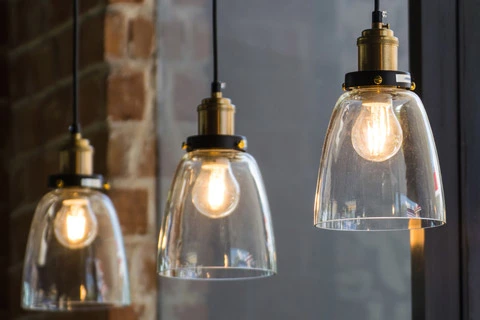Indoor Lighting Standards

Indoor Workplace Lighting Standards facilitate efficiency and prime performance in the work place through multifaceted analysis and guidance regarding proper indoor lighting techniques. By acknowledging and incorporating the psychological needs of the worker, economics and energy considerations, as well as ergonomic design principles, these standards strive to outline optimal methodologies for installation and operation of indoor lighting. Recommendations for the maximization of visual comfort afforded by the conjunction of artificial and day lighting are applied to specific office settings such as circulation spaces, office desks, and screen-based tasks.
ANSI/IES RP-1-20
Recommended Practice: Lighting Offices Spaces
By maintaining a focus on lighting quality and human visual performance, and using the available technology, lighting practitioners can light the workplace more effectively. Their careful attention to the details and willingness to work with and educate other members of the design team (architects, engineers, interior designers, owners, and users) will ensure the best possible use of available resources in design solutions that are cost effective, environmentally sustainable, and yield higher workplace satisfaction and, consequently, enhanced organizational productivity.
NECA/IESNA 502-1999 (R2006)
Standard for Installing Industrial Lighting Systems (ANSI)
This standard describes installation procedures for lighting systems commonly used in industrial and storage buildings.
ANSI/IES RP-36-20
Recommended Practice: Lighting Maintenance
Lighting designers and specifiers can use this Recommended Practice to design lighting systems that will be easy to maintain and will optimize energy efficiency and maintenance based on good maintenance practices and careful product selection. They will also be able to recommend good maintenance practices. Facility owners and managers can use it to develop a maintenance plan and properly maintain their lighting systems to ensure that their investment in light performs in accordance with requirements far into the future. Other electrical and lighting professionals can use the Recommend Practice in the roles they play in recommending, specifying, installing, commissioning, and maintaining lighting systems. Includes errata.
BS EN 12464-1:2021
Light and lighting. Lighting of work places Indoor work places (British Standard)
AS/NZS 1680.0:2009 (R2020)
Interior lighting, Part 0: Safe movement (FOREIGN STANDARD)
Sets out the minimum requirements for electric lighting systems within publicly accessible areas of buildings to provide visual conditions that facilitate the safe movement of people in the normal use of the building.
AS/NZS 1680.1:2006
Interior and workplace lighting - General principles and recommendations (FOREIGN STANDARD)
Provides general principles and recommendations for the lighting of building interiors to enhance the performance and comfort of those performing visual tasks. Deals with illuminating essential task details, using both artificial light and daylight, while controlling or excluding factors that might cause visual discomfort.
AS/NZS 1680.2.1:2008
Interior and workplace lighting - Specific applications - Circulation spaces and other general areas (FOREIGN STANDARD)
This Standard sets out recommendations for the lighting of circulation spaces and other areas which commonly occur in buildings of various types. It contains material that adds to or amends the recommendations in AS/NZS 1680.1:2006 and is intended to be read in conjunction with that Standard and with any applicable specific recommendations in other Standards in the AS/NZS 1680 series. The use of this Standard without reference to AS/NZS 1680.1:2006 is a misapplication of the Standard.
AS/NZS 1680.2.2:2008
Interior and workplace lighting - Specific applications - Office and screen-based tasks (FOREIGN STANDARD)
Sets out recommendations for the lighting of offices and similar tasks, including screen-based tasks. While the tasks may be commonly performed in interiors called offices?, they may also be performed in other interiors; for example, reading, writing and screen-based tasks frequently occur in most types of interior workplaces.
AS/NZS 1680.2.3:2008
Interior and workplace lighting - Specific applications - Educational and training facilities (FOREIGN STANDARD)
Sets out recommendations for the creation of good seeing conditions in educational and training facilities by means of appropriate lighting and interior colour treatment. To be read in conjunction with AS/NZS 1680.1:2006 and with any applicable specific recommendations in other Standards in the AS/NZS 1680.2 series.
